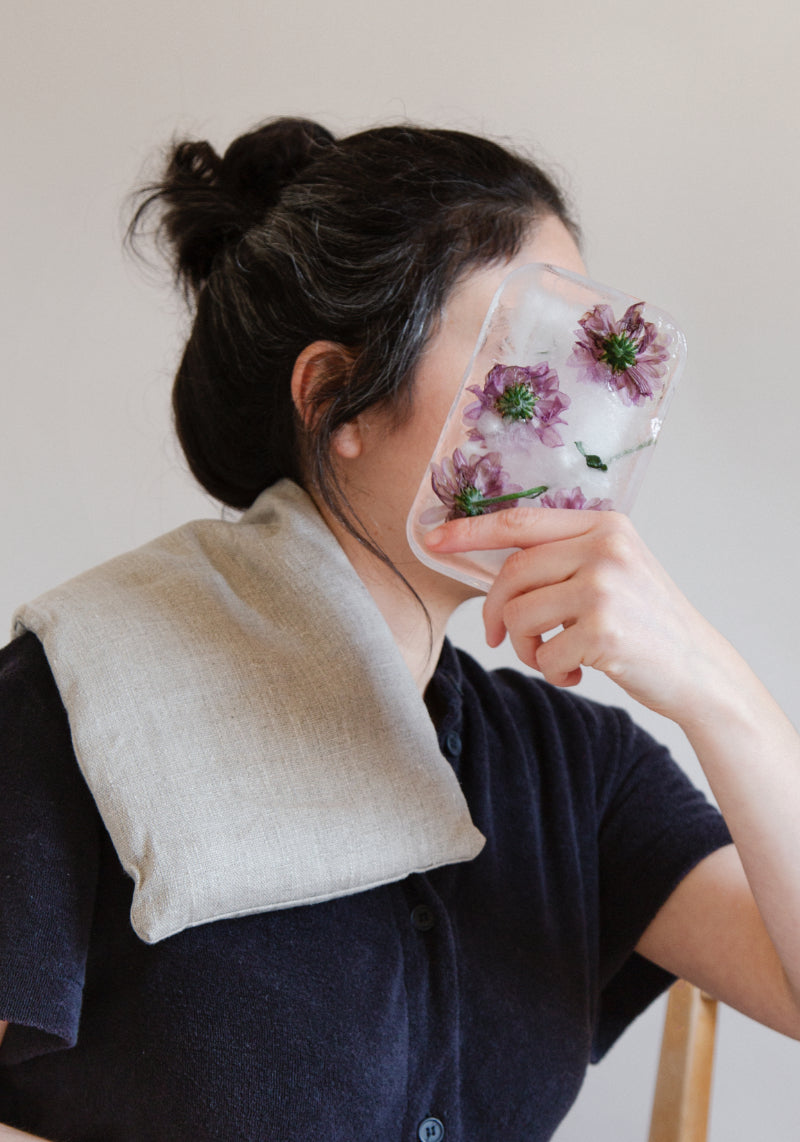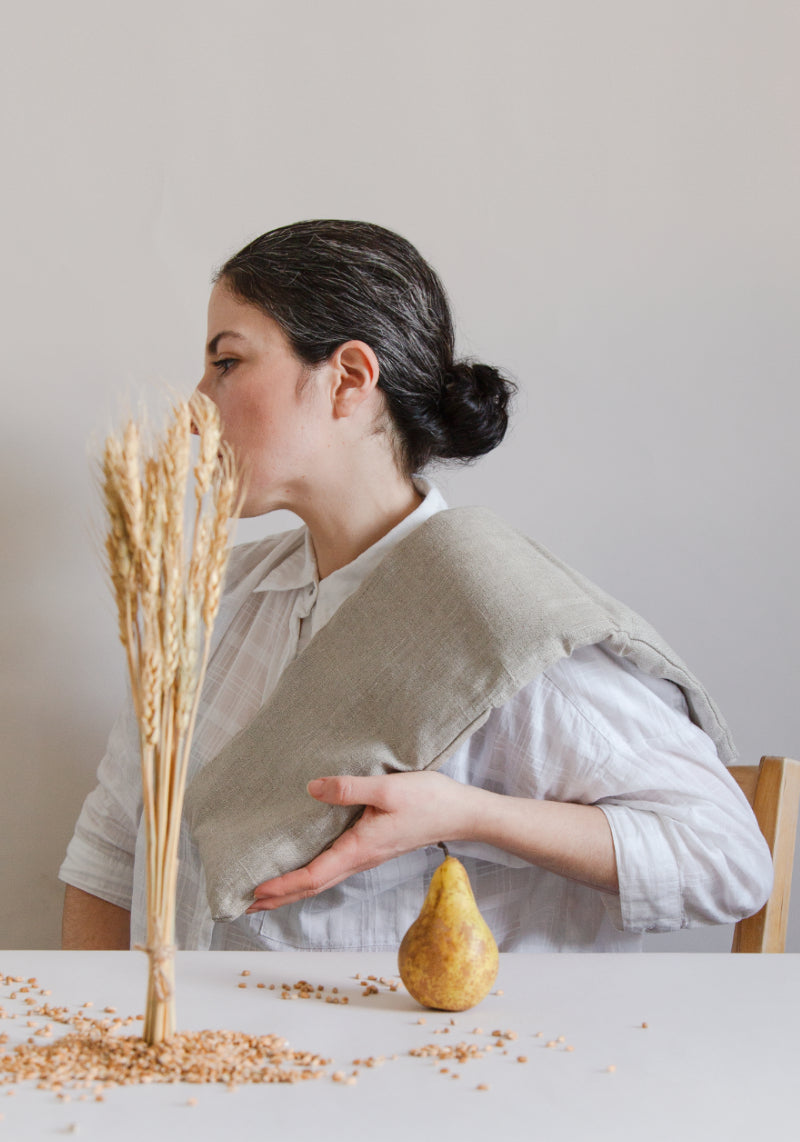How to Stay Warm for Less Amid a Cost of Living Crisis

The temparatues have well and truly dropped this week. With the new energy price cap increase, it now seems to cost a small fortune to keep our homes heated, even for just a few hours in the day. For those of us with little ones and those that work from home, this can impact how we live our lives.
In this blog post, we explore how to 'heat the human' rather than the whole house. Even heating just one room rather than the whole house can dramatically reduce the impact that energy bills contribute to the cost of living crisis.
In our small business, all of us have to be mindful as we mostly work from home but also have families who need to be kept warm. Below we've shared some of own tried and tested methods of keeping warm at home.

Cover the windows
Because outside temperatures transfer through the window glass, you can insulate your home more effectively by investing in some thermal or heavier curtains during the colder months.
Curtains can reduce heat lost by up to 41% in a single glazed window. Cover up your blinds or switch out any lightweight sheer materials with heavy, interlined curtains.
Plus, if your windows let in a lot of heat during the summer, insulated window treatments can help with that, too. On days where it’s freezing cold keep curtains and blinds closed for maximum impact.

Use a wheat bag under a cosy blanket
Rather than turning the heating on to heat a whole room, heat a wheat bag in the microwave or oven and place it on your body. To heat up your wheat bag, simply use a microwave or oven:
• Microwave: 1 - 3 minutes 600W
• Oven: 10 - 15 minutes 125°
To find out how much it costs to heat a wheat bag, you can see how much you pay per kWh on your energy bill. In this post, we've used the current Energy Price Guarantee average unit cost of electricity, which is 34p/kWh (0.34) to show how much cheaper it can be compared to putting the heating on. The running cost for a 700W microwave for 3 minutes would cost about 1p. That's a saving of 33p if we compare this to running the electric heating for an hour.
Besides keeping you warm and cosy the wheat bag is a safe and natural way to decrease joint stiffness, reduce pain and inflammation, and relieve muscle cramps. Tuck your wheatbag underneath your duvet for a delightfully warm bed to snuggle up into. You can also use it to warm prams, cots and carseats for little ones.
View our full range of wheat bags here

Use carpets and rugs
Uninsulated floors can account for up to 10% of heat loss in the home. Tiled and wooden floors can be beautiful but using rugs to cover them up during the colder months can make a huge difference.
A big faux sheepskin rug under your bed can make climbing out of there in the mornings more bearable, whilst runners can soften up any hard flooring in the hallways and kitchen.
If you have little ones or pets, they will love rugs so make sure to opt for a darker colour in case of sticky little hands, spills or muddy paws!!
If you don't have the resources to invest in rugs right now, put your feet up! The floor is usually the coldest part of the house. Putting your feet up on a stool or similar can help them stay that little bit warmer while you're sitting down.

Check your house for draughts
If your windows and doors have gaps or cracks, any warm air generated inside is likely to escape via these.
In the UK, draught-proofing windows and doors of a typical gas-fuelled, semi-detached property could save you around £30 per year. Draught-proof an open chimney when you’re not using it and you could save around £20 per year. Draught-free homes are more comfortable at lower temperatures, so you can turn down your thermostat, saving even more on your energy bills.
To check for draughts in the house, listen for rattles and whistling noises, especially during high winds. Take time to feel for moving air around doors, windows, floorboards, beams, skirting boards, and any air conditioning units. Check stairways and fireplaces, too. You can often see curtains moving, which is a sure indication of draughts.
Caulk or weatherstrip are easy and cost-effective ways to seal small gaps and cracks around windows and doors.

Warm up by moving around
Gentle exercise can help you stay warm. Be aware that more strenuous exercise will make your body sweat to try and cool you down, so keep it gentle and low key rather than a full HIIT workout. We recommend some yoga stretches to keep the blood flowing.
Yoga warm-up poses stimulate blood circulation. One of the most important functions of yoga warm-up poses is the stimulation of the blood circulation throughout the entire body. As soon as the muscles start contracting, the heart rate rises.

Layer up
It's been said before and no doubt it will be said again; layering up should be our first port of call this Winter. Thermals are a life-saver when it comes to working from home and not wanting to put the heating on.
It seems that a lot of people are opting to use sleeping bags at home, which work wonderfully if you're sat at your desk (we have opted for this method today!) Adding a wheat bag into your sleeping bag will keep you very cosy and warm indeed.
If you're heading outside, you need at least three layers to work in concert for maximum warmth:
- Base layer: Your long underwear needs to keep your skin as dry as possible.
- Middle layer: Your fleece or puffy jacket needs to hang onto as much body heat as possible.
- Outer layer: Your outer layer needs to protect you from rain and wind.
Avoid cotton: Set aside your love of cotton flannel (or anything cotton) because it soaks up water (including sweat) and takes longer to dry.

Going into Winter with the prospect of rising food and energy bills this year is daunting and will undoubtedly affect Christmas for many of us. Our small team are more than ever, incredibly thankful for your support during these difficult times.




